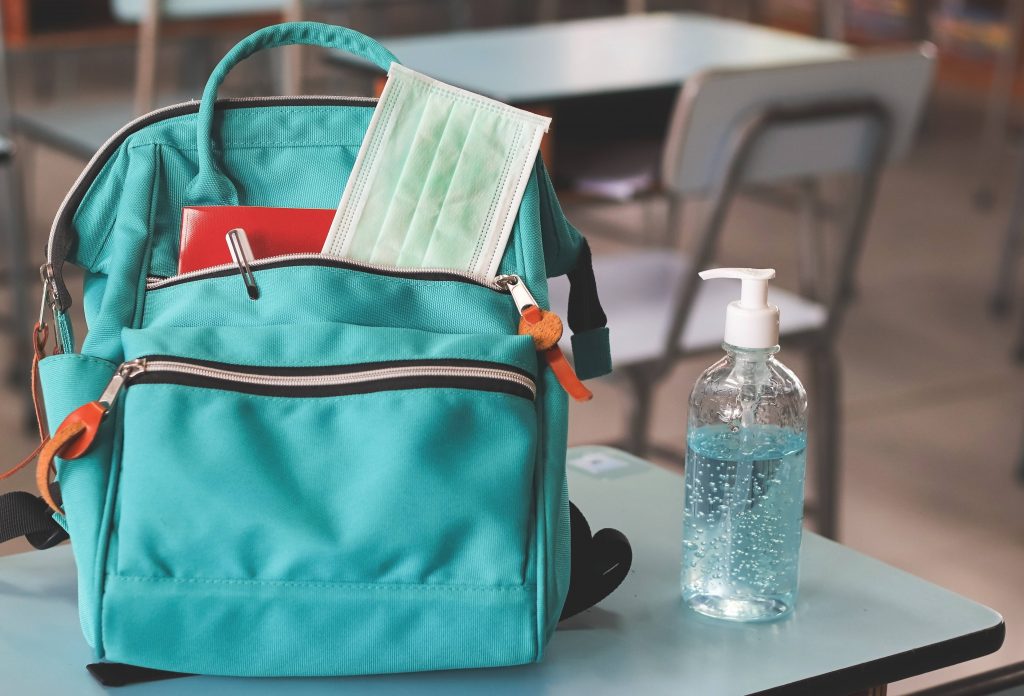
Families and school districts are weighing difficult decisions on whether to return to school in person, online or a combination of both during the COVID-19 pandemic.
"No matter what education model is chosen — in-person, distance learning or a hybrid of the two, we want to provide guidance to parents, children, teachers and staff on how to stay as safe and healthy as possible this school year," says Nipunie Rajapakse, M.D., a pediatric infectious disease specialist at Mayo Clinic.
"These tips will be familiar, and they continue to be the most effective ways we have to minimize the risk of COVID-19 exposure and spread. Certain strategies may be more effective for certain age groups of children. A combination of strategies is important because no single measure provides 100% protection from exposure," says Dr. Rajapakse.
Watch: Dr. Nipunie Rajapakse discusses back-to-school recommendations
Journalists: Broadcast-quality sound bites with Dr. Nipunie Rajapakse are in the downloads at the end of the post. Please "Courtesy: Mayo Clinic News Network."
Practice safe distancing.
When possible, follow safe social distancing of at least 6 feet, even when wearing a mask.
"COVID-19 is primarily spread from person to person through respiratory droplets released into the air when coughing, sneezing, talking or singing," Dr. Rajapakse says. "When you're unable to wear a mask, such as when eating in the cafeteria, social distancing is even more critical to reduce the risk of virus transmission."
Wear a mask.
Wear a mask to limit the spread of respiratory droplets.
"It's a great idea for students, teachers and staff to keep a clean backup mask somewhere convenient, like their backpack, locker or desk," notes Dr. Rajapakse. "Make sure to clearly label your child's mask with his or her name, and teach children never to share or trade masks with others."
Clean your hands frequently.
Wash your hands with soap and water, or apply and use hand sanitizer frequently. For appropriate use of hand sanitizer, follow these steps:
• Apply one to two squirts of sanitizer to the palm of one hand ― enough to cover all surfaces of the hands.
• Rub the sanitizer over all the surfaces of hands, fingers and nails until dry. This should take at least 20 seconds.
• Keep a to-go size hand sanitizer container nearby.
"Cleaning hands regularly throughout the day is very important, especially before eating, after using the bathroom, or before and after touching shared surfaces or your mask," Dr. Rajapakse says.
Disinfect high-touch surfaces.
Disinfect surfaces routinely and immediately if they become visibly soiled. Disinfect items frequently touched such as light switches, door handles, faucets and keyboards.
Perform symptom self-checks and stay home if sick.
Every day before going to school, check for symptoms of illness, especially COVID-19 symptoms, such as new-onset cough or shortness of breath. If you are sick, avoid spreading germs by staying home from school or other activities.
"Even though it may seem like just a minor runny nose or cough, staying home from school or work is the right thing to do to reduce the risk of exposing others to not only COVID-19, but other respiratory viruses like influenza, as well," Dr. Rajapakse says. "Everyone over 6 months old is strongly recommended to get an influenza vaccine this fall. During this pandemic we have also seen many children fall behind on their routine vaccines so it is important to check with your primary care provider and ensure all of your child’s vaccines are up to date prior to returning to school."
School year will be a challenge
No matter which learning model is chosen by communities, the school year is going to be challenging.
"We know how important schools and teachers are — supporting students' education, social development and mental health," Dr. Rajapakse says. "Ultimately, how to participate in school will be a family decision, weighing all the factors in your specific circumstances — your own family's health risks, the academic needs of your children, your work demands and, of course, the amount of COVID-19 transmission in your communities."
Information in this post was accurate at the time of its posting. Due to the fluid nature of the COVID-19 pandemic, scientific understanding along with guidelines and recommendations may have changed since the original publication date.
Check the Centers for Disease Control and Prevention website for additional updates on COVID-19. For more information and all your COVID-19 coverage, go to the Mayo Clinic News Network and mayoclinic.org.







